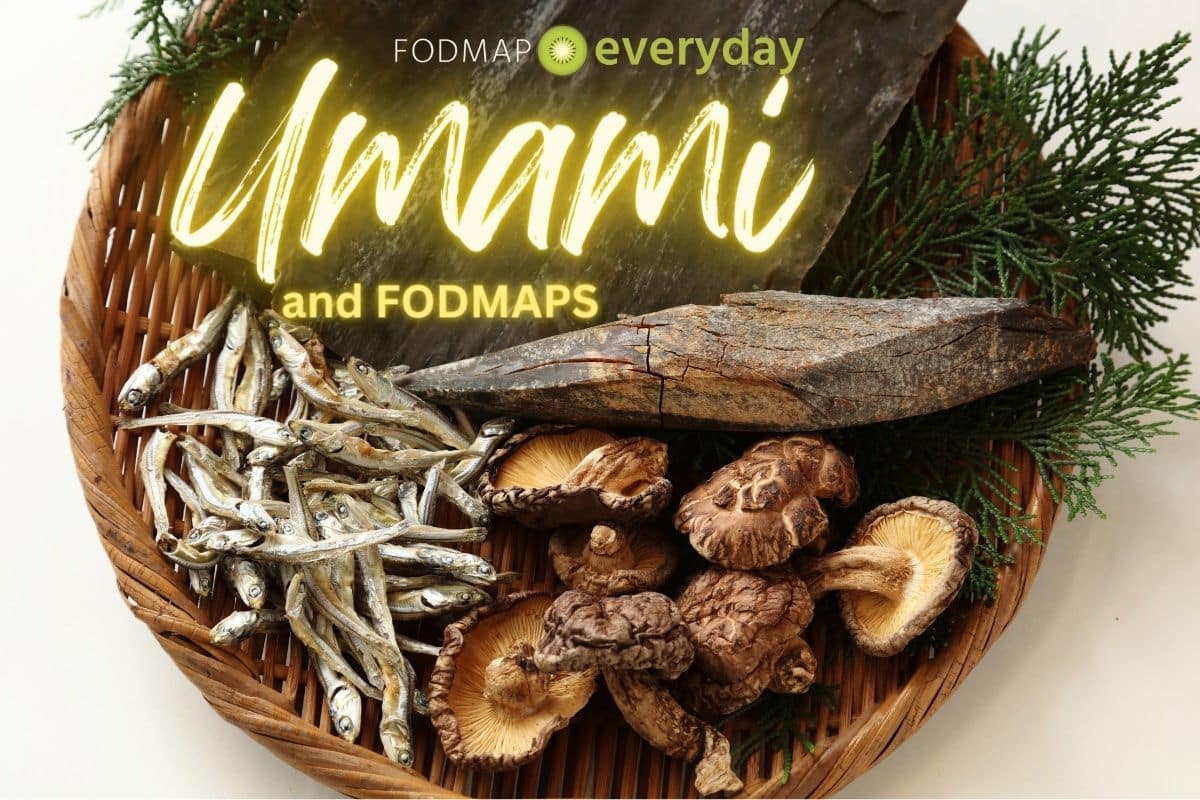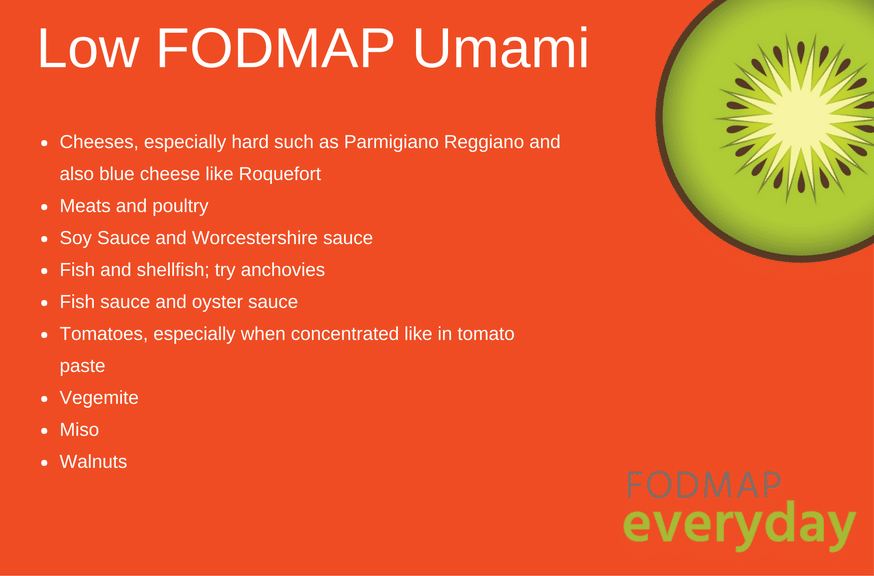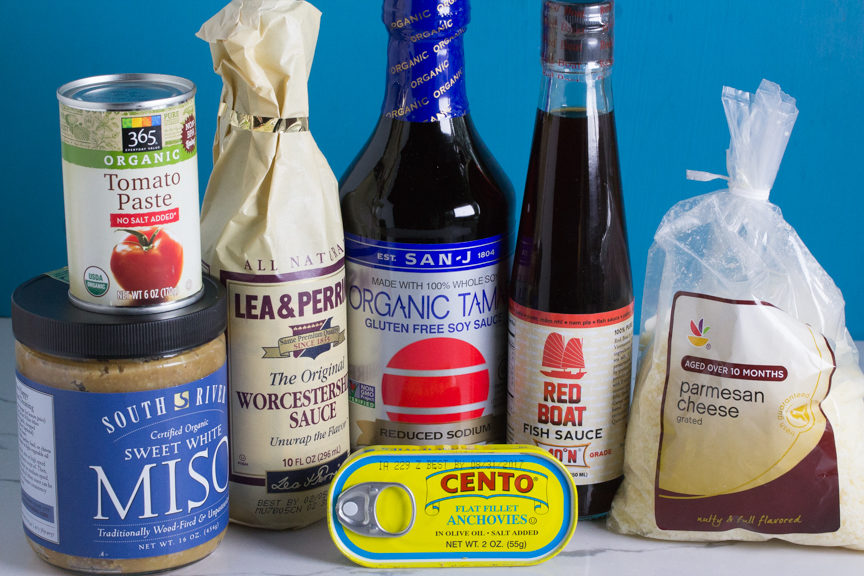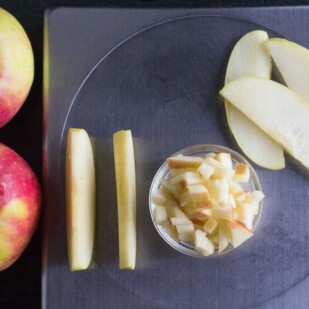What is Umami?
Maybe you have heard the term “umami” and aren’t quite sure what it is. It is defined in Japanese as “pleasant savory taste” or even “deliciousness”. Some describe it as a meaty taste. It is experienced as a delectable quality to food, giving us a deeply flavorful experience.

It is, in fact, one of the 5 tastes in addition to sweet, salty, sour and bitter. Maybe you haven’t heard of it before, even though you know about the other 4 tastes. The experience of umami has been long accepted in Asia, but for whatever reasons, American school kids were not taught about it – and largely still aren’t!
Umami Science
In 1908 a Japanese scientist, Kikunae Ikeda, set out to determine why dashi, the classic Japanese broth made from seaweed and dried fish flakes, had such a bold, meaty flavor. He put the dashi and the ingredient components through many tests in order to isolate the flavor compounds and eventually ended up with crystals via an evaporation process.
He tasted the crystals and detected the distinct, meaty, savory flavor which he coined umami, from the Japanese umai (delicious). The molecular formula was the same as glutamic acid, an amino acid. In humans, glutamic acid is present as glutamate, a similar compound that has one less hydrogen atom.
Glutamate is one of the most plentiful excitatory neurotransmitters in our brains. By 1909 Ikeda began selling his product, Ajinomoto (meaning “essence of taste”) as a flavor enhancer – and yes, it is indeed MSG, otherwise known as monosodium glutamate.
But this article is not about adding MSG to your foods. It is about the naturally occurring glutamate that is found in many foods, that provide for an umami rich experience.
Taste & Flavor Are Complex
You may not have thought about it before but very often foods that we deem “complex” are often a balance of the 5 tastes – having more than one taste type in one food makes for a multifaceted experience.
On the other hand, sometimes we like to have a more mono experience, as with potato chips, where saltiness is predominant. Neither taste sensation is better than another – we are just giving you a vocabulary for understanding taste in food.
Umami & Adding Flavor to the Low FODMAP Diet
You know how sometimes a dish can taste flat? Adding something that is high in umami factor can perk it up. When eating low FODMAP, especially during the more restrictive Elimination phase, it pays to know how to add big flavor back in with umami rich low FODMAP foods.
Certain foods are known to be high in umami factor and luckily many of them are low FODMAP approved. Check out the lists below to know which are which.

As with all low-FODMAP foods, please refer to the Monash and FODMAP Friendly apps for suggested amounts.
ADDITIONAL Umami Foods
- Nutritional yeast – great for vegans; not all taste the same. We love the Bragg brand.
- Kombu – tested by FODMAP Friendly
HIGH FODMAP Umami Foods
- Mushrooms, particularly dried such as shiitake, but they do have low FODMAP serving sizes.
Cooking Techniques Amplify Umami
Cooking techniques, such as caramelization and drying, can enhance umami. Take tomatoes for example. While fresh tomatoes themselves are low FODMAP and get a Green Light, sun-dried are considered Moderate in FODMAPs.
The evaporation that takes place during the process to create the dried product concentrates the sugars in the tomato and that’s why on the Monash app a serving size of dried tomatoes as limited to 8 g/.028 oz or approximately 2 sun-dried tomato pieces.
As of now caramelized versions of foods have not been tested, so while the technique of caramelization enhances umami, we do not at this time know how it affects FODMAPs. As always, as you cook keep track of your responses to foods and you will be able to come up with your own roadmap to delicious success.
Fermentation Can Accentuate Umami
Fermentation frees up the umami compounds. This is why a fermented soy product such as miso is higher in umami than raw soybeans. Kimchi contains umami as well; we have a low FODMAP recipe for you.
Aging & Curing
Both aging and curing affect umami as well. Aged meats such as prosciutto or cured ham are richer in umami than their fresh counterparts. As cheddar cheese is aged the umami content increase dramatically, so young cheddar will not be as umami rich as one that has aged for at least 8 months.
Even red ripe tomatoes are richer in umami than green tomatoes or barely ripe ones.
Using Umami In Low FODMAP Cooking
Refer to the list of acceptable low FODMAP umami rich foods when you are inventing recipes and combining ingredients to create the most satisfying eating experiences. The low FODMAP diet does not have to be about feeling taste deprived and we are here to show you how to thrive on the low FODMAP diet.








Thank you for wonderful explanation of Umami. I didn’t have a clue, I’m so pleased to now understand fully what it means. Thank you.
Hi Sylvia! We learn new things everyday:)
I just want to say I am literally obsessed with this blog. Every time I have a random FODMAP related question somehow this site always has a blog on the topic. Thank you so much for your help!
Thank you for letting us know we are helping you:) We try to cover the topics people ask about – and we hear the same questions all the time. And then every now and then, there is something that is really interesting to me, like Umami, and I dive in!
You mentioned drying increases the FODMAP content. Do you know is it proportional to the amount of food that is used at the start of the drying process? For example, if 15 green beans is low FODMAP, would 15 dried green beans also be low FODMAP?
Thank you!
The problem is there is no standardization with the drying, so unless we knew you had beans dehydrated to X% moisture and they were the same every time BUT even then, the beans you started with might have had varied FODMAP content. Check out our articles on how Monash lab tests for FODMAPs, and also how FODMAP Friendly does.